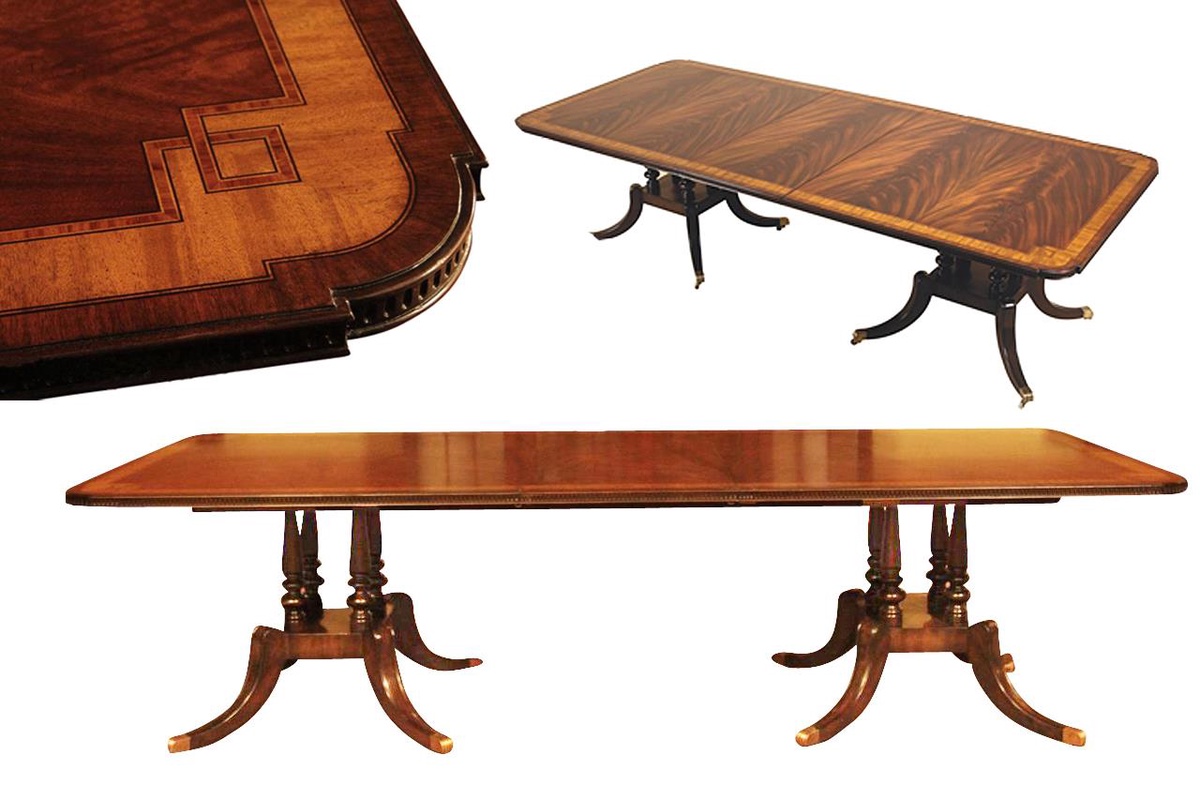Welcome to our comprehensive buyer's guide for selecting the ideal hardwood dining table for your home. Choosing the perfect hardwood dining table is an important decision, and we're here to provide you with the knowledge and insights you need to make an informed choice that will enhance your dining space.
Chapter 1: Understanding Hardwood Types
When it comes to hardwood dining tables, there are a variety of popular wood options to consider, each with its own unique characteristics and benefits. Oak, maple, cherry, and walnut are among the most sought-after hardwoods for dining tables. Understanding the differences between these options will help you make an informed decision that aligns with your style and preferences.
Oak is known for its durability and prominent grain patterns, making it a timeless choice for dining tables. Maple, on the other hand, offers a smooth and even texture with a fine grain, ideal for a more contemporary look.
Cherry wood boasts a rich, warm colour and a smooth, satiny texture, while walnut is celebrated for its dark, lustrous finish and striking grain patterns. By exploring the unique characteristics and benefits of each type of wood, you can choose a dining table that not only meets your functional needs but also adds aesthetic value to your dining space.
Chapter 2: Size and Shape Considerations
The size and shape of a dining table can significantly impact the overall look and functionality of your dining space. Before making a purchase, it's essential to consider the dimensions of your room and the number of people you intend to seat regularly. Whether you're looking for a rectangular, round, or square table, each shape offers its own set of advantages based on the space available and your personal preferences.
Measuring your room and considering the flow of traffic around the table are crucial steps in determining the best size and shape for your needs. A spacious dining area may accommodate a large rectangular table, while a cozy breakfast nook might be better suited for a round or square table. By providing tips on measuring your room and discussing the impact of different table sizes and shapes, we aim to help you make a choice that optimizes both form and function in your dining space.
Chapter 3: Style and Design Features
The style and design of a dining table play a significant role in defining the aesthetic of your dining area. Whether you prefer a traditional, modern, farmhouse, or industrial look, there are design styles and features to suit every taste. From classic turned legs to sleek, minimalist designs, the options are vast and diverse.
In addition to style, it's important to consider design features such as table leg styles, finishes, and detailing. These elements contribute to the overall visual impact of the table and its compatibility with your existing decor. By exploring various design styles and highlighting key design features, we aim to provide you with the knowledge and inspiration to choose a table that complements and elevates your dining space.
Chapter 4: Quality and Durability Factors
Assessing the quality and durability of a hardwood dining table is crucial to ensuring its longevity and performance. Factors such as construction techniques, joinery methods, and finishes all contribute to the overall quality of the furniture. Understanding these factors will empower you to make an investment in a dining table that stands the test of time.
Quality hardwood dining tables are often constructed using time-honoured techniques such as mortise and tenon joinery, which ensure sturdy and long-lasting furniture. Additionally, finishes such as lacquer and oil contribute to the protection and enhancement of the wood, making it more resistant to daily wear and tear. By educating readers on these factors, we aim to equip you with the knowledge to make an informed decision when evaluating the quality and durability of hardwood dining tables.
Chapter 5: Budgeting Tips and Value Assessment
Setting a budget for your hardwood dining table purchase is an important step in the decision-making process. Our guide offers guidance on how to establish a realistic budget that aligns with your preferences and financial considerations. We also provide insights into assessing the value of different options based on price, quality, and long-term investment considerations.
By understanding the relationship between price and quality, you can make a purchase that offers the best value for your budget. Whether you're seeking a budget-friendly option or are willing to invest in a high-quality heirloom piece, our guide aims to help you navigate the range of choices available and make a decision that brings you satisfaction and confidence in your investment.
Conclusion
In conclusion, our comprehensive buyer's guide to choosing the perfect hardwood dining table has covered key considerations that will empower you to make an informed decision.
By understanding hardwood types, size and shape considerations, style and design features, quality and durability factors, as well as budgeting tips and value assessment, you are well-equipped to embark on your search for the ideal dining table.


No comments yet